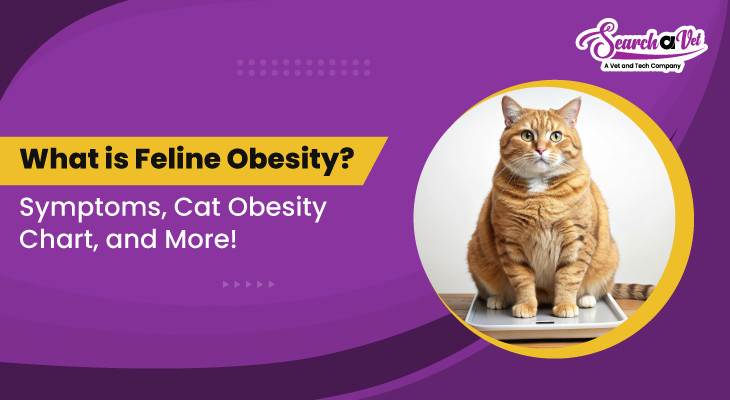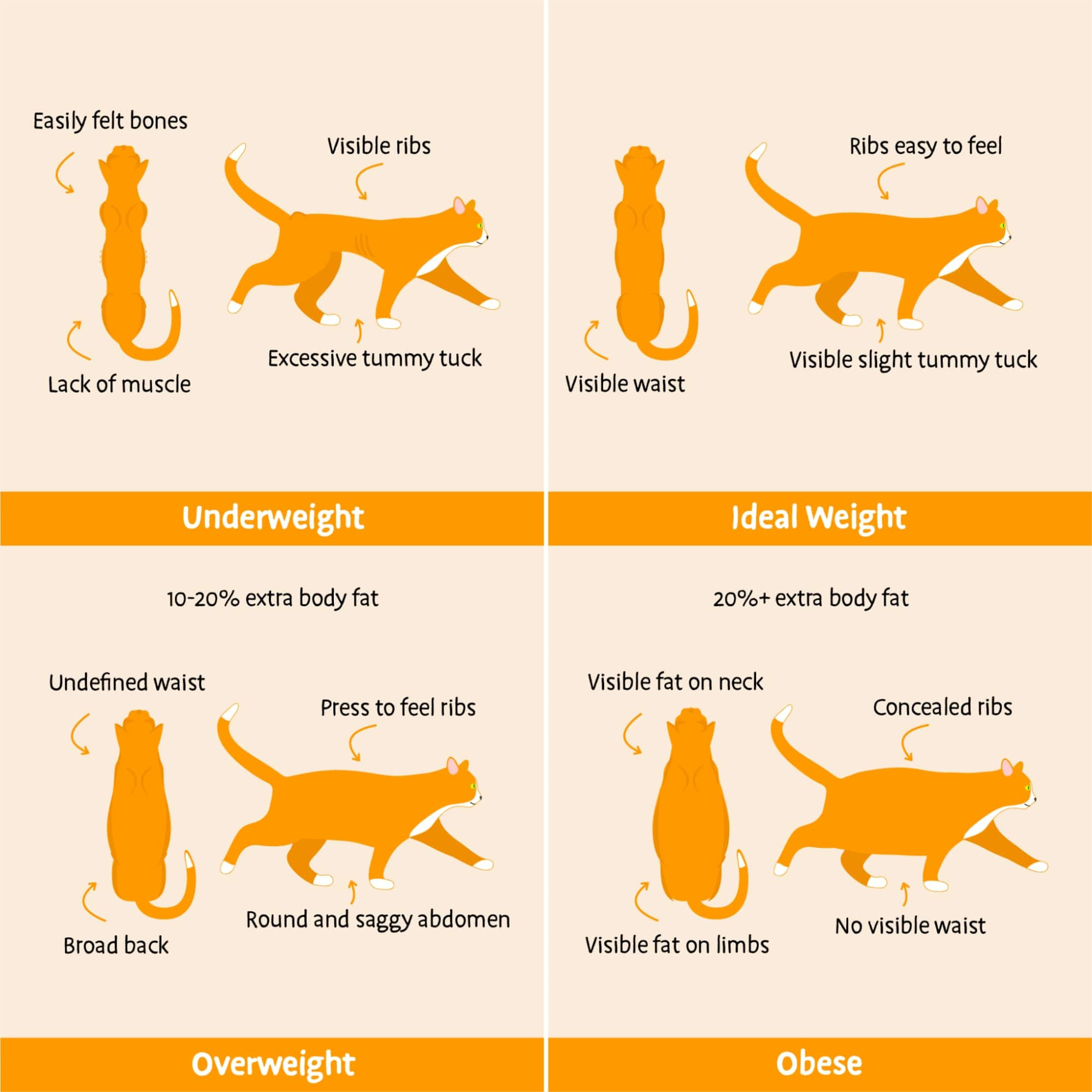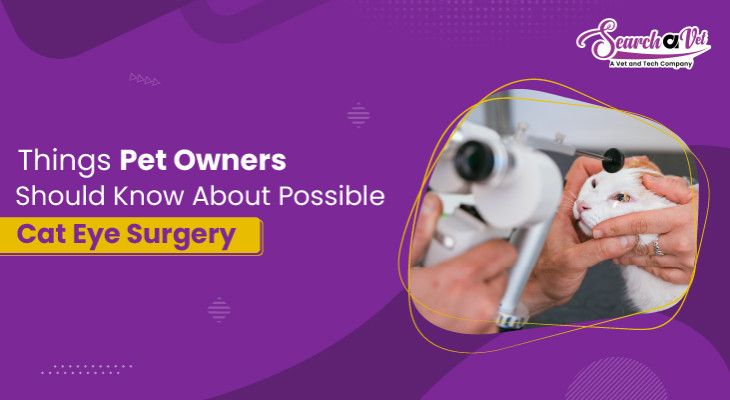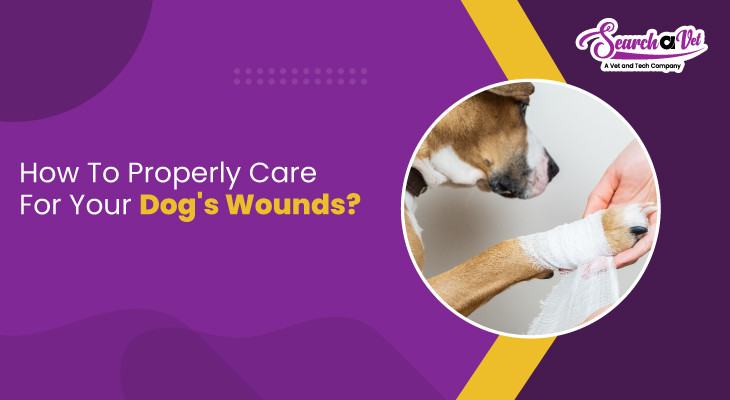What is Feline Obesity? Symptoms, Cat Obesity Chart, and More
 Sep 27, 2024
Sep 27, 2024

A study conducted by the Association for Pet Obesity Prevention (APOP) suggests that 34% to 63% of cats in developed areas are obese or overweight.
This indicates the importance of providing a healthy diet to our pets. Our feline fellows need a balanced and nutritious diet rich in essential fibers, vitamins, and other nutrients to maintain their ideal weight.
Pet parents need to thoroughly understand obesity to understand how it can affect their cats and prevent them from developing this disease.
For this purpose, we’ve mentioned this illness's details, including its symptoms, treatment options, and a cat obesity chart.
An Overview of Feline Obesity
Obesity, derived from the word obese, means having extra body fat. Obesity in cats refers to being overweight, and it can lead to serious health issues.
Obesity and overweight are slightly different terms. Cats are considered overweight when they gain more than 10-20% of their ideal weight. On the other hand, when their weight surpasses 10-20% of the overweight, they become obese.
Like obesity in dogs, it can pose major health risks to cats, which can lead to a weak immune system, endocrine and metabolic problems, heart disease, and arthritis.
Cat Obesity Chart

Domestic cats between ages 8 to 12 years and those not breeding are more vulnerable to obesity.
What Are the Symptoms of Obesity In Cats?
Clear and visible weight gain is one of the most common signs of obesity. Apart from that, its symptoms also include the following:
- Having trouble climbing stairs or leaping
- Greater amounts of sitting or lying down
- Lack of desire to get up and move
- Disappearance of the waistline
- Pet parents are unable to feel hip or rib bones
- A flat back or a rectangular cat profile
- The collar continues to tighten
- Reduced bowel movements
- Increased passing of gas
If you notice any of these signs, it’s important to consult a veterinarian immediately. He will diagnose the main cause of obesity and recommend medication along with a diet plan that primarily focuses on your pet’s requirements.
Causes of Obesity in Cats
Obesity is caused when a cat consumes more calories and foods than necessary. This situation often occurs when cats undergo neutering or spaying procedures. Apart from that, lack of physical activities, sleeping disorders, and indoor confinements can also lead to obesity.
Research shows that free feeding is one of the major causes of obesity. Scientists believe that offering your cat dry kibble throughout the day without measuring portions isn’t good for their health.
How to Treat Obesity in Cats?
Obesity in cats can be treated with proper diet and nutrition. With the help of a licensed veterinarian, you create a balanced diet plan for your cat. Along with that, measuring your cat's weight, observing their behavior, and dietary changes are also important. This will help you understand whether your chosen diet plan is working for them or not.
Create your personalized cat obesity chart and note down the daily weight of your cat. In addition, you can also mention some precautions or tips to manage their weight in your cat obesity chart.
Final Thoughts
Cat obesity is a serious feline health issue that can cause several problems, including behavioral issues and lethargy. It’s important to feed your cat with appropriate portions of food and treats. You can devise a balanced diet plan with the help of a veterinary dietician to prevent obesity.
Join Search a Vet to schedule an online appointment with a licensed veterinarian. We offer 24/7 services to help you get immediate veterinary consultation anytime and anywhere. Join us today and ensure the optimal health of your feline fellows!
FAQs:
Which drug is used for treating cat obesity?
Bupropion-naltrexone, Liraglutide, and Orlistat are the FDA-approved drugs used for treating obesity in cats. It’s important to consult a veterinarian before providing your cat with these medications to prevent complications.
What are the medical causes of cat obesity?
Apart from overeating, a few medical conditions can also lead to obesity. This includes spaying or neutering, pregnancy, arthritis, and acromegaly. It’s important to address these underlying issues for effectively treating obesity in cats.
How can I create a cat obesity chart diet plan for my cat?
Consult a veterinary dietician to create a balanced diet plan for your cat. They’ll assess your cat’s overall health and suggest a diet plan that specifically focuses on your cat’s unique requirements.
What weight is considered obese for a cat?
When your cat weighs above 10 to 20% of their ideal weight, they’re considered obese.
What’s the life expectancy of an obese cat?
Studies show that obesity can decrease a cat's life expectancy by 5 to 10 years.




